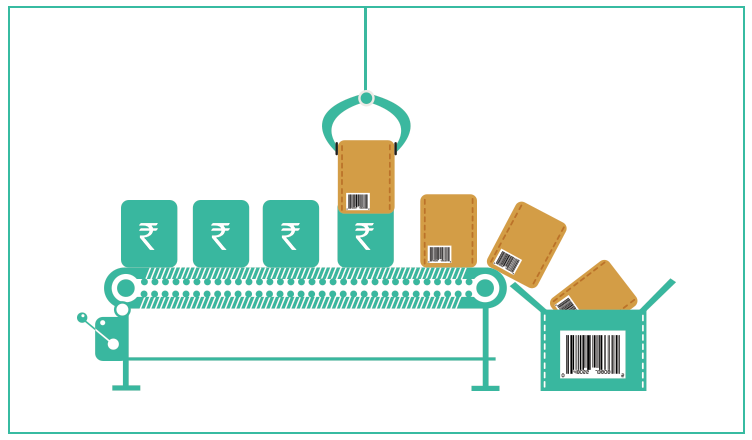Flexible payment solutions have become an important part of modern retail. Customers today want the freedom to choose how they pay, and businesses that offer these options through their payment gateway often see higher conversions and stronger customer loyalty. Among the most popular solutions are buy now pay later (BNPL) and no cost EMI. Both provide installment payment flexibility, but they work differently for merchants and customers.
Understanding these differences can help businesses decide which method aligns best with their goals.
| Table of Contents What Is BNPL? What Is No-Cost EMI? Key Differences Between BNPL and No-Cost EMI Benefits of BNPL for Business Benefits of No-Cost EMI Which Works Better for Your Business? Conclusion |
What Is BNPL?
BNPL, or Buy Now Pay Later, is a short-term financing option that lets customers purchase products instantly and pay over time, usually in weekly or monthly installments. For merchants, BNPL is powered through a BNPL payment gateway, which integrates into the checkout process and enables instant approval with minimal paperwork.
BNPL has become popular among younger shoppers who prefer flexible, interest-free options instead of traditional credit cards. For businesses, adopting BNPL for small business or BNPL for ecommerce can bring in new customer segments and improve sales conversion. Many retailers highlight BNPL benefits like faster adoption and broader reach when promoting their checkout options.
What Is No-Cost EMI?
No cost EMI refers to installment payments where the customer repays the product cost in equal monthly installments without any additional interest. The merchant or the brand typically bears the cost to make the scheme attractive.
In simple terms, the customer pays only the actual price of the product, divided into easy monthly amounts. While the customer sees clear savings, the business absorbs the cost, which can reduce margins but drive higher volumes. This is why many retailers highlight the benefits of No-cost EMI when selling big-ticket items such as electronics, appliances, or smartphones.
Key Differences Between BNPL and No-Cost EMI
Although both solutions revolve around buy now pay later payments, they differ in structure and impact.
- Funding source: In BNPL, the financing is usually handled by the provider. In no cost EMI, the merchant often subsidizes the interest cost.
- Customer profile: BNPL for ecommerce attracts younger, digitally savvy consumers with smaller but frequent purchases. No cost EMI works well for larger-ticket purchases where customers want longer repayment timelines.
- Impact on margins: With BNPL, merchants pay a fee to the provider but keep control over pricing. With no cost EMI, businesses bear more direct costs as they cover the interest subsidy.
- Integration: A BNPL payment gateway integrates seamlessly with the checkout process, while no cost EMI usually requires tie-ups with banks or card issuers. Smooth BNPL integration is often easier and faster compared to EMI setups.
Benefits of BNPL for Business
The popularity of buy now pay later for merchants is growing because of its multiple advantages:
- Increased sales conversion: Customers hesitant to pay the full amount upfront are more likely to complete purchases with buy now pay later payments.
- Wider reach: BNPL for small business helps merchants attract first-time buyers, especially younger demographics who may not use credit cards.
- Cash flow stability: With Buy Now Pay Later for merchants, sellers get paid upfront by the provider, while customers repay in installments.
- Seamless adoption: With a reliable payment gateway, setup is quick and requires minimal changes to existing systems.
Merchants often compare different BNPL service providers to ensure they find the right mix of reliability, costs, and customer experience. A trusted partner like PayU, for example, offers a secure BNPL payment gateway as well as no-cost EMI or low-cost options that deliver smooth BNPL integration without disrupting the checkout journey.
Benefits of No-Cost EMI
The benefits of no cost EMI are most visible in product categories where the upfront price is a barrier. Customers enjoy interest-free repayment, making it easier to purchase premium products.
Buy Now Pay Later for merchants often boosts average order value and reduces cart abandonment. It is especially effective for electronics, furniture, and lifestyle goods, where buyers are willing to commit to installment payments if the overall cost does not increase.
Which Works Better for Your Business?
Deciding between BNPL and no cost EMI depends on business goals, customer profile, and product type.
- For affordable products or fast-moving consumer goods, buy now pay later payments may be the better option. It attracts younger audiences, integrates easily through a payment gateway, and ensures merchants receive funds instantly.
- For more expensive items, no cost EMI can motivate customers to make purchases they might otherwise delay. However, merchants must note that it may be an added burden on their margins.
Forward-looking businesses often combine both methods, offering customers the flexibility to choose. By working with strong BNPL service providers, merchants can implement scalable solutions and maximize BNPL benefits without heavy operational costs.
Conclusion
BNPL and no cost EMI have both proven their worth in India’s retail and ecommerce ecosystem. While BNPL provides flexibility, speed, and wide adoption through a BNPL payment gateway, no cost EMI appeals to customers seeking interest-free installment payments for high-value products. The right choice depends on your business category, customer preferences, and financial strategy. By offering the right Buy Now Pay Later payments and EMI options, merchants can enhance customer satisfaction and build sustainable growth.

